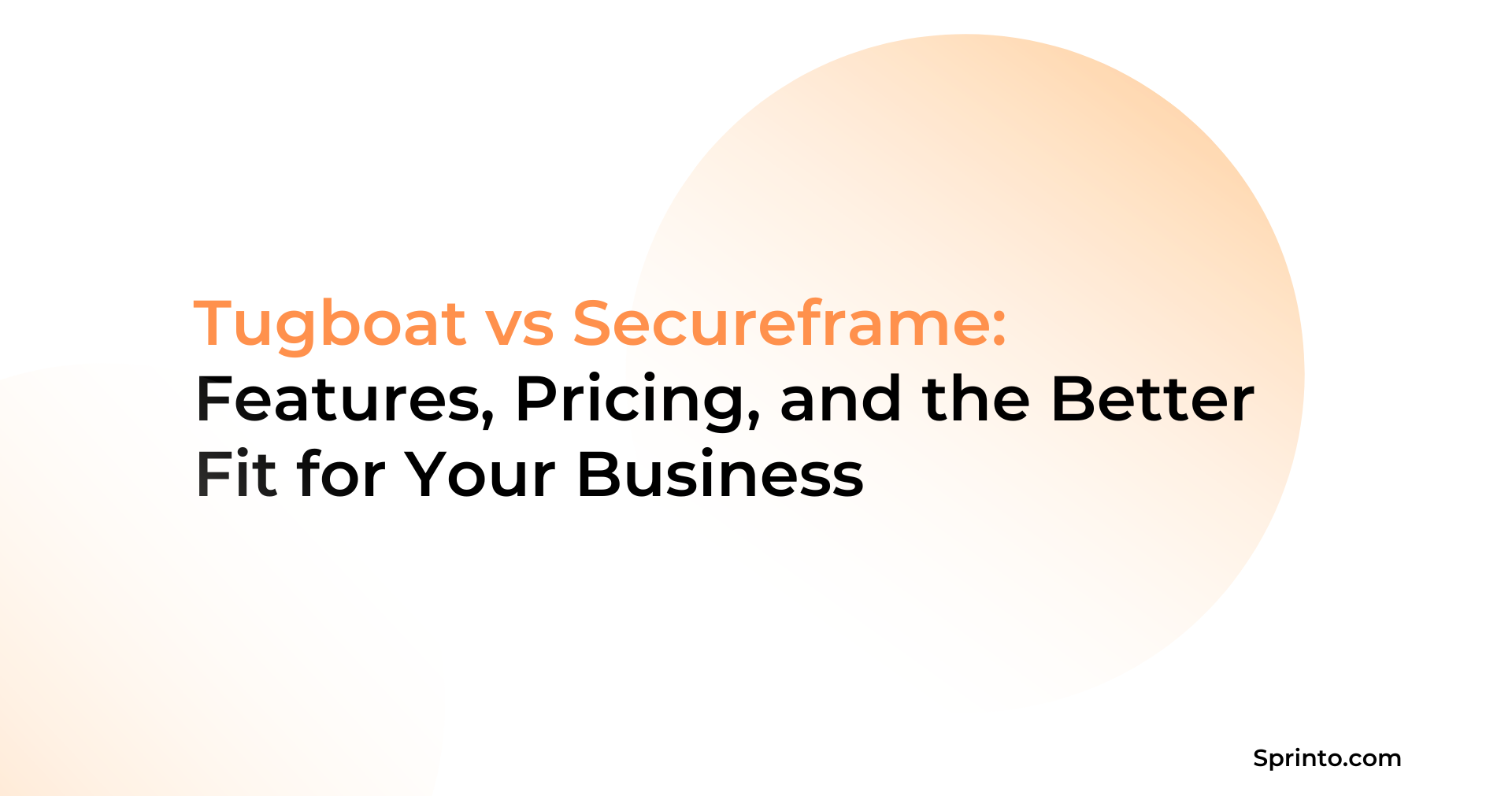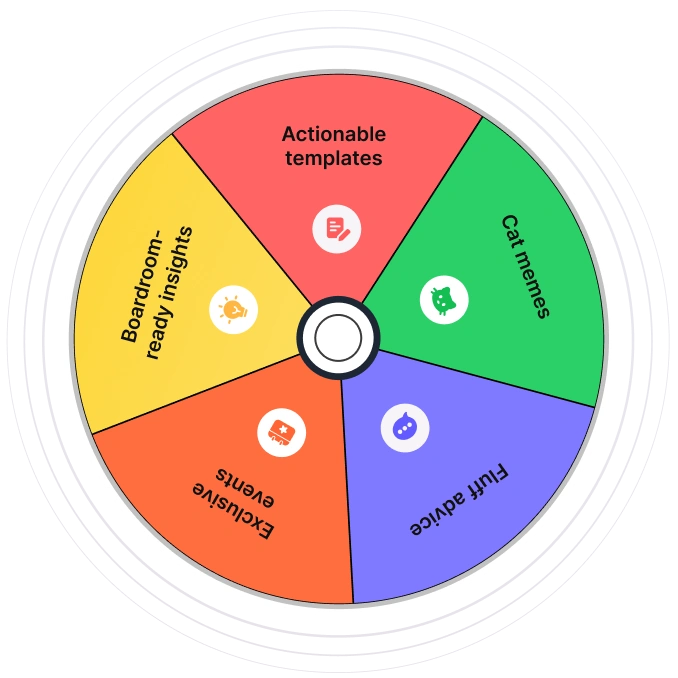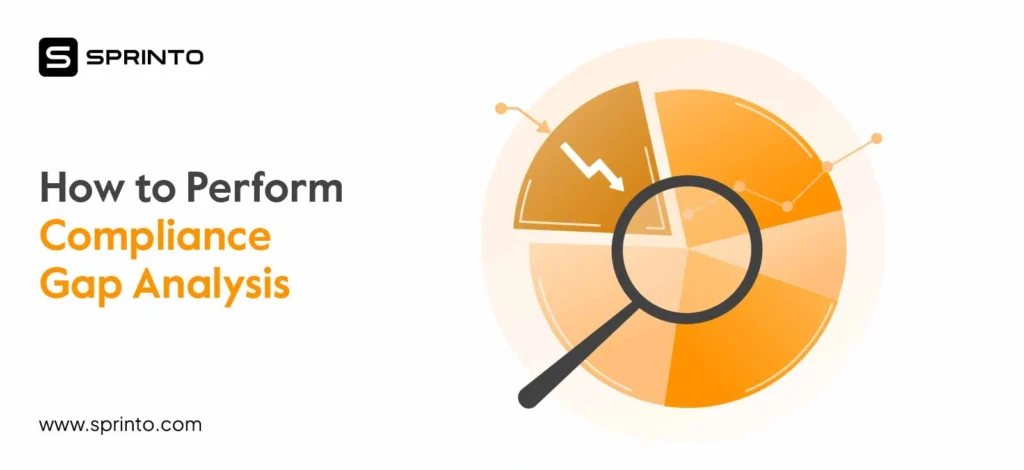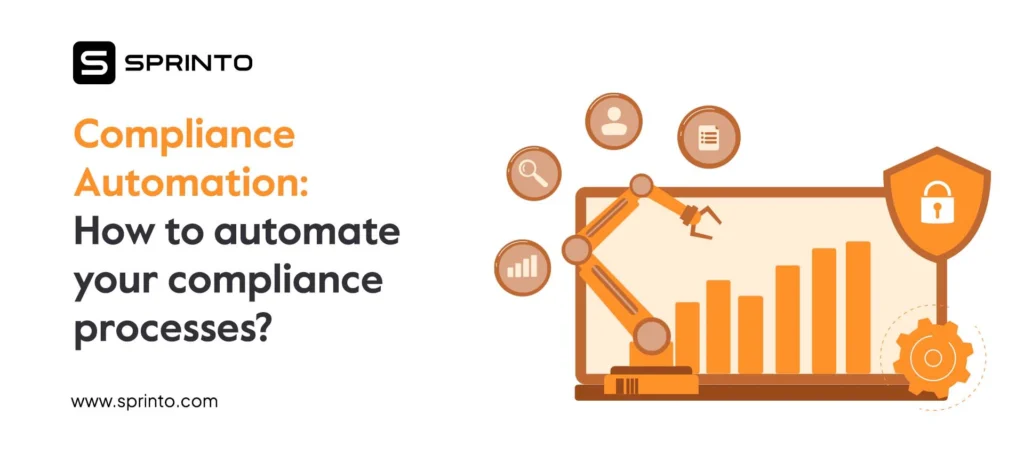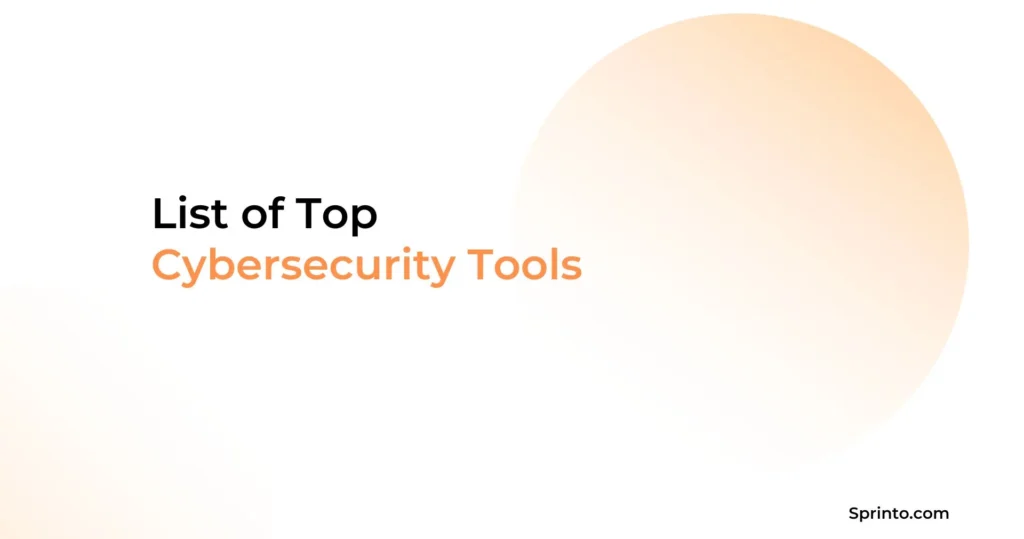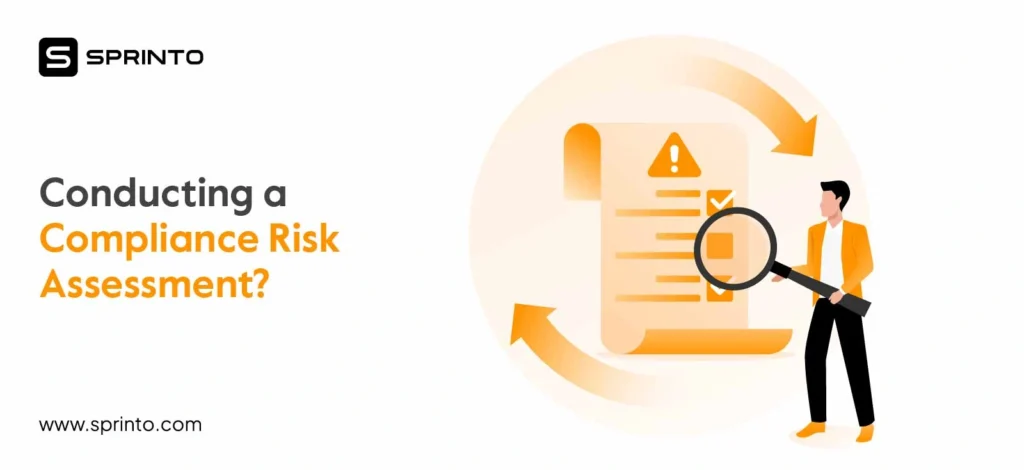Compliance tools aren’t created equal. Tugboat Logic and Secureframe both promise faster audits and smoother certification, but that’s where the similarities end. Tugboat Logic favors a guided, step-by-step approach ideal for managing multiple frameworks. Secureframe is all about speed, using automation and real-time monitoring to get you audit-ready fast.
In this comparison, we break down Tugboat logic vs Secureframe, looking at their features, pricing models, and ideal use cases – so you can choose the platform that best fits your compliance goals and growth stage.
| TL;DR Tugboat Logic (by OneTrust) and Secureframe help businesses comply with SOC 2, ISO 27001, HIPAA, and more, but they shine in different areas. Tugboat offers strong policy management, risk tracking, and governance depth, making it a solid fit for teams that value structure and flexibility in managing their compliance programs. Secureframe prioritizes speed, automation, and a premium user experience, making it ideal for businesses aiming for faster SOC 2 readiness and minimal manual effort. |
Tugboat Logic vs Secureframe: A quick overview
What is Tugboat?
Tugboat Logic (part of OneTrust GRC & Security Assurance Cloud) simplifies complex frameworks so businesses of all sizes can achieve and maintain compliance with ease. It works like a “compliance co-pilot,” guiding teams through every step of earning certifications and staying audit-ready.
The platform delivers pre-built frameworks, integrations, and automated workflows that cut down manual evidence collection, close compliance gaps quickly, and centralize management in one place. It’s especially well-suited for startups and small to mid-sized companies that want a fast, guided path to compliance without building large in-house teams.
What is Secureframe?
Secureframe helps organizations build trust and meet regulatory requirements faster by automating compliance, leveraging AI, and enabling continuous monitoring. It embeds compliance into daily operations tracking risks, monitoring infrastructure, managing policies, and keeping multiple certifications active year-round.
With over 40 supported frameworks, real-time monitoring, and AI-powered remediation tools, Secureframe gives companies in highly regulated industries a scalable way to prove security to customers, partners, and regulators. It provides expert guidance, connects you with auditors, and delivers tailored workflows so your team can stay ahead of evolving compliance demands.
Best suited for mid-market to enterprise organizations, Secureframe excels when businesses need multi-framework coverage and advanced compliance management.
Tugboat vs Secureframe: Feature breakdown
Now that we’ve covered the basics, let’s dig into how Tugboat Logic and Secureframe compare when it comes to their features.
1. Depth of framework support
Tugboat Logic boasts support for more than 50 frameworks, from staples like SOC 2, ISO 27001, HIPAA, and PCI DSS to industry-specific options like NIST 800-53 and NIST CSF. This breadth is helpful for companies that need flexibility or foresee expanding into new frameworks over time.
Secureframe supports over 40 frameworks, including all the major ones plus newer and niche options like CMMC 2.0, FedRAMP, ISO 42001, and custom frameworks tailored to unique requirements. While its total count is slightly lower, the coverage is deep in regulated sectors such as government, defense, and healthcare.
Verdict: Tie. Tugboat takes the crown for sheer breadth; Secureframe wins for specialized coverage in regulated industries.
2. Automation capabilities
Tugboat Logic automates a wide swath of compliance tasks, including evidence collection from integrated tools, gap detection, policy generation with machine learning, and even vendor risk assessments. The workflows are intuitive once set up, but they may require more initial effort to configure.
Secureframe takes automation further with AI-powered tools like Comply AI for instant questionnaire responses, continuous monitoring of infrastructure and controls, and automated remediation guidance. These real-time capabilities mean issues are spotted and resolved faster, reducing the burden on internal teams.
Verdict: Secureframe’s AI-driven automation and real-time monitoring outpace Tugboat’s otherwise solid automation toolkit.
3. Integrations
Tugboat Logic integrates with a broad set of HR, cloud, and security tools, such as GitHub, GitLab, Azure, Okta, Zapier, Snyk, BambooHR, and Datadog. These tools cover most small to mid-sized companies’ needs without overcomplication.
Secureframe offers over 300 native integrations, spanning everything from cloud infrastructure (AWS, GCP, Azure) to developer platforms, identity providers, HR systems, and ticketing tools. This depth makes it easier to plug into complex tech stacks without relying on manual data uploads.
Verdict: Secureframe’s expansive integration library makes it a better fit for companies with diverse or enterprise-grade toolchains.
4. Policy and risk management
Tugboat Logic delivers a strong governance suite—pre-built policy templates, control libraries, risk assessment modules, vendor management, incident tracking, compliance calendars, and dashboards. It’s a comprehensive set for organizations that want a one-stop compliance hub.
Secureframe also offers policy templates, but adds automation on top. Policies are version-controlled, cross-mapped across frameworks, and updated automatically as regulations change. Risk management is continuous, with asset inventories, personnel oversight, vendor tracking, and real-time alerts.
Verdict: Tie. Tugboat offers more hands-on control for teams that like to customize, while Secureframe’s automation makes ongoing policy and risk maintenance almost effortless.
5. Onboarding speed and ease of use
Tugboat Logic’s onboarding is thorough but can feel heavy at the start. Its broad feature set means there’s a learning curve, and smaller teams without dedicated compliance staff might need more time to get comfortable.
Secureframe is consistently praised for its clean UI and guided onboarding process. Case studies show companies getting audit-ready in just a few weeks. The combination of intuitive design and responsive support shortens the path from signup to certification.
Verdict: Secureframe’s faster setup and a smoother learning experience make it the go-to for teams that value speed.
6. Quality of customer support
Tugboat Logic maintains a 4.4/5 rating on G2, praising its stability, knowledgeable implementation teams, and solid onboarding guidance. The platform offers tiered support, meaning Enterprise customers often get faster, more proactive responses, while smaller plans may experience longer turnaround times. Support is generally reliable, but the experience can vary depending on the service level purchased.
Secureframe, with a 4.7/5 G2 rating, positions support as a core differentiator. Customers consistently highlight quick response times, knowledgeable staff, and a highly guided onboarding process that takes much of the heavy lifting off internal teams. The platform also integrates help directly into its workflows, reducing friction when issues arise. This hands-on, high-touch approach appears to contribute to Secureframe’s higher customer satisfaction scores.
Verdict: Secureframe. While Tugboat Logic delivers dependable support, Secureframe’s consistently higher G2 rating, responsiveness, and built-in assistance make it the stronger choice for organizations that value fast, proactive help.
Breaking down the pros and cons
Here’s a breakdown of their strengths, trade-offs, and where each tool shines across different frameworks and use cases.
Tugboat Logic (by OneTrust)
Pros
- Strong multi-framework coverage with common control mapping — a plus if you plan to expand beyond SOC 2 and ISO 27001 into HIPAA, GDPR, or CCPA.
- Established risk management and policy management modules that integrate compliance into broader GRC workflows.
- Offers in-depth audit readiness and pre-audit checklists, making it well-suited for companies that want a highly structured process.
- Flexible framework expansion means you can build a long-term compliance program without starting from scratch each time.
Cons
- Onboarding can take longer compared to competitors like Secureframe, which may be a drawback for teams under tight deadlines.
- Support quality and responsiveness can vary based on your support tier.
- UI is more utilitarian than modern, which might feel dated for teams used to slick SaaS products.
- For smaller, first-time SOC 2 projects, the breadth of features can feel overwhelming.
Secureframe
Pros
- Faster onboarding and time-to-audit, especially for SOC 2 Type I — a major plus if compliance is deal-blocked.
- Clean, intuitive UI with built-in guidance, making it easier for non-compliance teams to stay engaged.
- Strong integrations (100+), automating much of the evidence collection for SOC 2, ISO 27001, HIPAA, GDPR, and more.
- Higher-rated customer support (4.7/5 on G2) with a hands-on onboarding process that reduces internal workload.
- Transparent, predictable pricing without hidden enterprise tiers for core features.
Cons
- While strong for the most common standards, framework coverage is narrower compared to Tugboat Logic’s multi-framework library.
- May be less customizable for organizations with highly specific or niche compliance requirements.
- Risk management and advanced GRC capabilities aren’t as deep as Tugboat Logic’s enterprise-grade modules.
Secureframe vs Tugboat pricing
The Tugboat vs Secureframe cost can vary widely depending on plan and scope. Here’s how their pricing stacks up and which one might give your business more for less.
Tugboat Logic
Tugboat Logic by OneTrust starts much lower than many competitors, with plans beginning at $500/year for the Essentials tier. From there, it scales depending on the size and needs of your business: Startup ($3,000/year), Growth ($10,000/year), and Midsize ($17,500/year). The higher tiers add more advanced features, greater automation, and additional framework coverage. Tugboat also offers a free trial, making it possible to test before committing—a perk that Secureframe does not advertise.
Secureframe
Secureframe’s pricing is more standardized but also higher. According to AWS Marketplace listings, a 12-month contract for up to 100 employees costs $7,500 for platform access, plus an additional $7,500 for your first compliance framework (e.g., SOC 2 or ISO 27001). That brings the baseline annual cost to $15,000, excluding AWS infrastructure costs. Additional frameworks or larger employee counts will increase the price, and you’ll need to request a custom quote for exact numbers.
Winner: Tugboat Logic. If affordability and a lower entry point are key, Tugboat’s tiered plans and free trial offer more flexibility, especially for startups and smaller teams. Secureframe, while pricier, may justify the cost with its more hands-on onboarding and integrated support.
Sprinto outpaces Tugboat Logic and Secureframe
Tugboat Logic focuses on guiding teams through structured checklists and offers deep GRC capabilities, making it a fit for mid-to-large enterprises already in the OneTrust ecosystem or managing multiple, complex frameworks.
Secureframe, on the other hand, prioritizes speed and simplicity, helping fast-moving startups and SaaS companies achieve SOC 2 or ISO 27001 quickly with strong automation and an intuitive interface.
Sprinto goes further by delivering a scalable compliance engine that keeps you audit-ready across multiple frameworks year after year.
- Unmatched automation: Automates up to 99% of control checks across cloud, HR, codebase, and vendors with 300+ integrations and proactive alerts to fix gaps before they block audits.
- Entity-based architecture: Maps systems, users, and processes dynamically, allowing controls to be reused across 30+ frameworks like SOC 2, ISO 27001, HIPAA, and GDPR.
- White-glove audits: A dedicated compliance manager handles everything from pre-audit prep to direct coordination with auditors.
- Strategic support: 24×7 access to ISO-certified experts, project-managed onboarding, and custom workflows built for your business.
- All-in-one platform: Includes built-in security training, risk management, vendor workflows, compliance drift alerts, and auditor-ready dashboards — replacing multiple point tools.
| Disclaimer: The information on this page is based on independent research conducted by our team and on insights gathered from publicly available, user-first review platforms such as G2. We have summarized feedback to highlight commonly mentioned strengths and areas for improvement. While we strive for accuracy and balance, user experiences may vary, and we encourage readers to review the original sources for the most up-to-date feedback. This article was last updated in September 2025. |
FAQs
Tugboat Logic (by OneTrust) starts at $500/year for the Essentials plan, while Secureframe pricing starts at around $7,500/year for up to 100 employees (based on AWS Marketplace data). On pure cost, Tugboat is significantly cheaper, but pricing should be weighed against the scope of features and integrations you need.
Secureframe typically delivers SOC 2 readiness in weeks while Tugboat Logic’s timelines vary depending on company size and complexity, often taking a few months. For sheer speed, Secureframe is faster.
Secureframe edges ahead with more streamlined, out-of-the-box automation for evidence collection and monitoring, plus 100+ integrations. Tugboat offers strong automation too, but its GRC-heavy architecture can feel more process-driven than plug-and-play.
Yes. Both Tugboat Logic and Secureframe support HIPAA compliance alongside SOC 2, ISO 27001, GDPR, and other major frameworks.
Tugboat Logic: Integrates with cloud providers (AWS, GCP, Azure), HRIS systems, ticketing tools, and security platforms — tailored for GRC workflows.
Secureframe: Offers 100+ integrations across cloud infrastructure, HR systems, identity providers, version control, and ticketing tools, designed for faster audit prep and continuous monitoring.
Radhika Sarraf
Radhika Sarraf is a content marketer at Sprinto, where she explores the world of cybersecurity and compliance through storytelling and strategy. With a background in B2B SaaS, she thrives on turning intricate concepts into content that educates, engages, and inspires. When she’s not decoding the nuances of GRC, you’ll likely find her experimenting in the kitchen, planning her next travel adventure, or discovering hidden gems in a new city.
Explore more
research & insights curated to help you earn a seat at the table.



